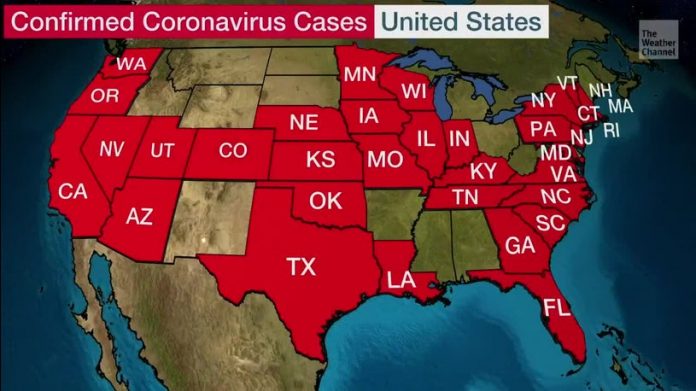The coronavirus outbreak has now infected more than 1,000 people in nearly 40 U.S. states — and the country’s top authority on infectious diseases says things will only get worse.
Dr. Anthony Fauci, director of the National Institute of Allergy and Infectious Diseases, warns that the number of cases of the COVID-19 viral disease will continue to grow because containment measures and contact tracing have failed to prevent community spread of the virus.
“Is the worst yet to come, Dr. Fauci?” Rep. Carolyn Maloney, chairwoman of the House Committee on Oversight and Reform, asked Fauci on Wednesday.
“Yes, it is,” Fauci replied.
While this coronavirus is being contained in some respects, he testified, the U.S. is seeing more cases emerge through community spread as well as international travel.
“I can say we will see more cases, and things will get worse than they are right now,” Fauci said. “How much worse we’ll get will depend on our ability to do two things: to contain the influx of people who are infected coming from the outside, and the ability to contain and mitigate within our own country.”
He added: “Bottom line, it’s going to get worse.”
Any potential vaccines for the virus are still at least a year or a year and a half away, Fauci said.
Health officials are now working to bolster coronavirus testing in the U.S., Fauci said: “We need to know how many people … are infected, as we say, under the radar screen.”
Local and state health officials, desperate to stop the coronavirus from spreading in hard-hit areas, are enacting bans on public gatherings, closing schools and encouraging people to avoid close contact with others. Their goal is to slow down the virus as they work concurrently to contain it.
A few areas are also widening the availability of COVID-19 testing — including offering drive-up service. Until this week, several U.S. states did not have labs that could test for the virus. Federal officials say the role of local agencies will become only more important.
“As we experience the growing community spread in the United States, the burden of confronting this outbreak is shifting to states and local health professionals on the front lines,” the director of the Centers for Disease Control and Prevention, Dr. Robert Redfield, said during Wednesday’s committee hearing.
You Have A Fever And A Dry Cough. Now What?
SHOTS – HEALTH NEWS
You Have A Fever And A Dry Cough. Now What?
The U.S. public health system currently has the capacity to test up to 75,000 people, Redfield said.
The country’s hot spots remain Washington state (273 cases as of Wednesday morning), New York (176 cases) and California (157 cases). The coronavirus has killed at least 31 people in the U.S. — most of them in Washington. Deaths have also been reported in California, Florida, New Jersey and South Dakota.
Those COVID-19 numbers come from a dashboard created by Johns Hopkins University’s Whiting School of Engineering, which tracks the data nearly in real time. Those figures have been more up to date than the public tally kept by the CDC, which updates its national map at noon ET each day — using numbers from 4 p.m. the previous afternoon.
The CDC maintains a separate count for the nearly 50 infected Americans who were repatriated to the U.S. from Wuhan, China, and Yokohama, Japan.
Coronavirus symptoms and prevention
To prevent the coronavirus from spreading, the CDC recommends washing hands with soap and water for at least 20 seconds or using a hand sanitizer if a sink isn’t available. The World Health Organization says people should wear face masks only if they’re sick or caring for someone who is.
“For most people, COVID-19 infection will cause mild illness; however, it can make some people very ill and, in some people, it can be fatal,” the WHO says. “Older people, and those with pre-existing medical conditions (such as cardiovascular disease, chronic respiratory disease or diabetes) are at risk for severe disease.”
The most common symptoms of COVID-19, according to a recent WHO report that draws on more than 70,000 cases in China: fever (in 88% of cases); dry cough (68%); fatigue (38%); sputum/phlegm production (33%).
Shortness of breath occurred in nearly 20% of cases, and about 13% had a sore throat or headache, the WHO said.













